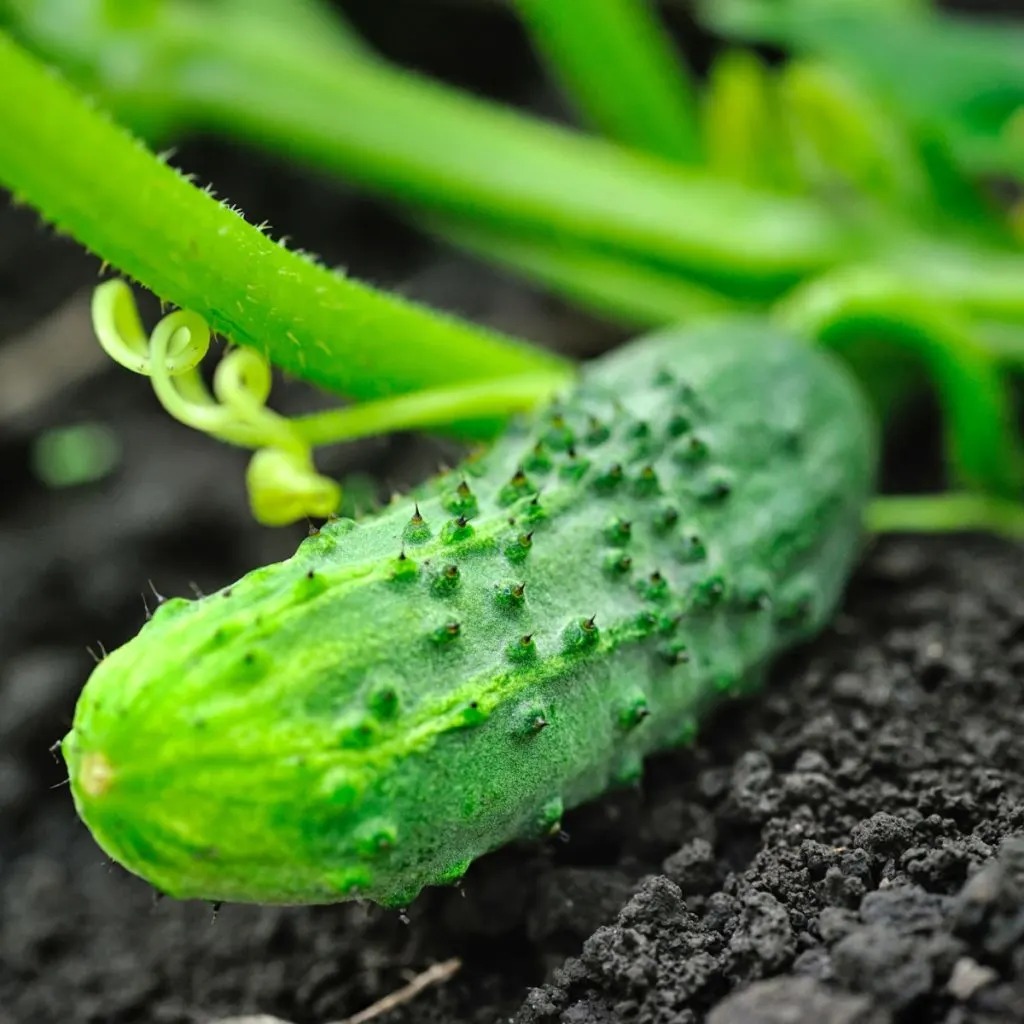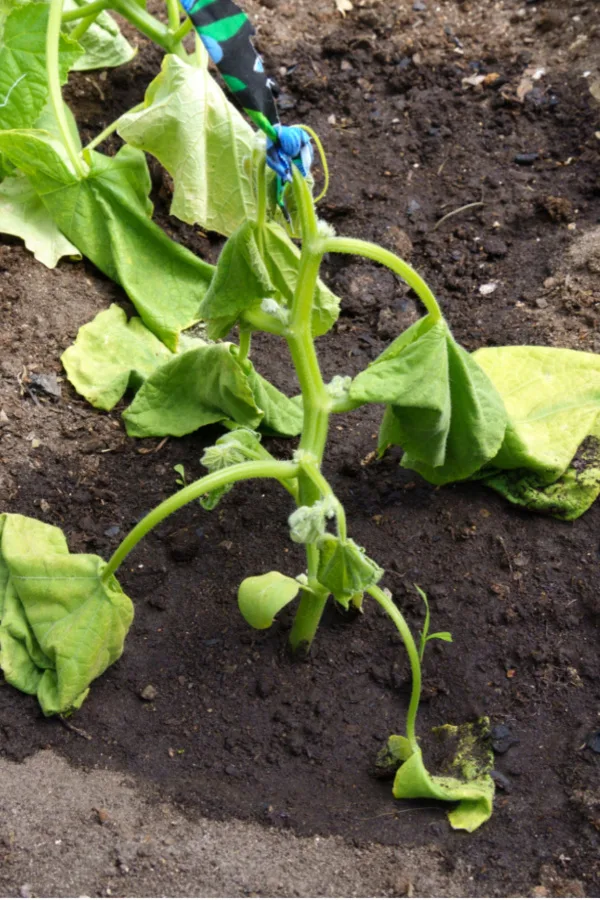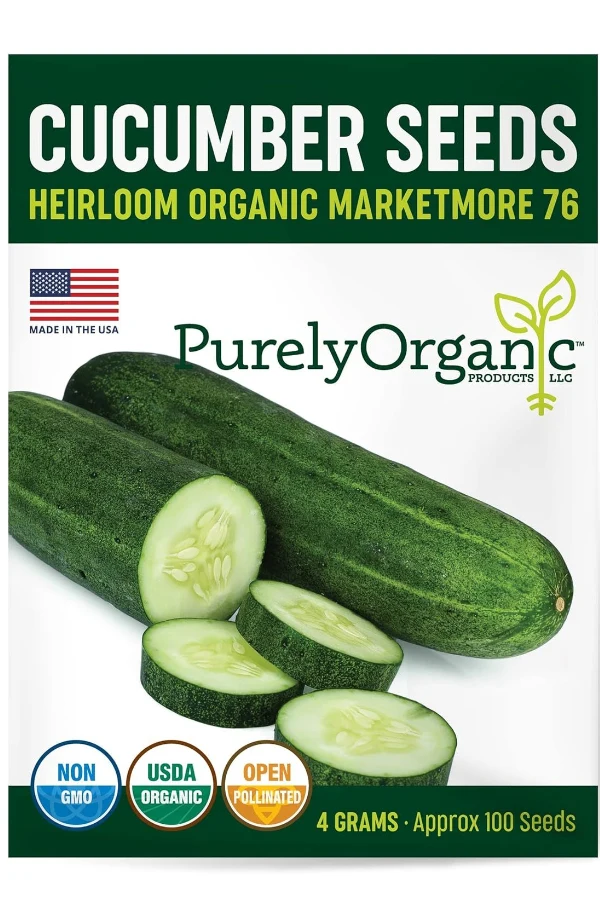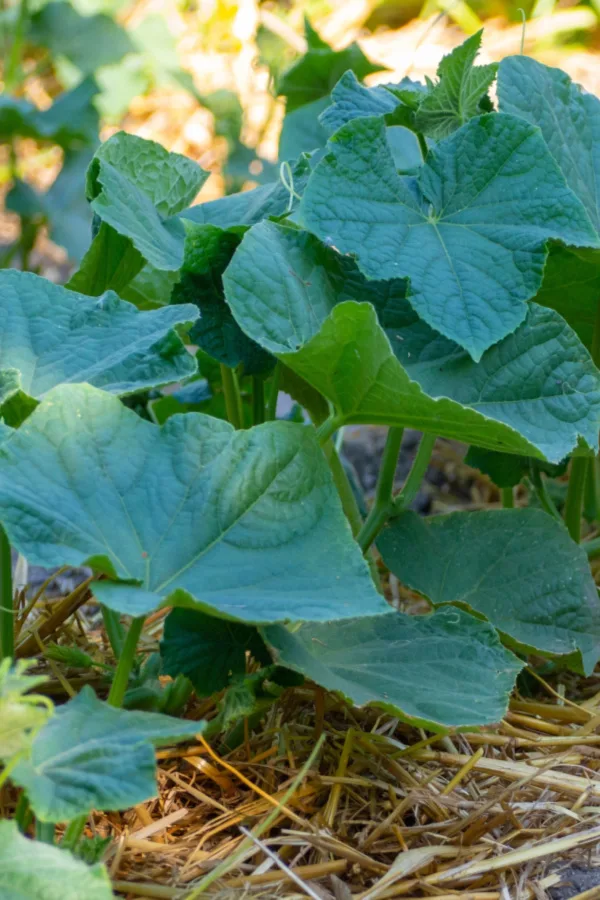If you are looking to plant and grow your best crop of cucumbers ever this year – then more than anything else – it’s critical to plant your cucumbers for success right from the start!
Cucumbers are one of the most popular vegetable plants for growing in a home garden. Not only are they delicious for eating fresh – they also happen to be the perfect vegetable for making all kinds of tasty pickles and relishes to enjoy all year long.
But as popular as cucumbers are, they can also be one of the most frustrating crops of all for gardeners to grow. Cucumber plants are notorious for giving gardeners fits. Whether it’s trying to get young seedlings to take off, getting blooms to turn into cucumbers, or keeping plants safe from mildew, blight, and pest attacks – it can sometimes seem impossible to get a big harvest.

The good news is that growing cucumbers doesn’t have to be difficult or frustrating. In fact, by following four simple planting and growing secrets, you can not only grow healthy plants and have a big harvest – you can also help keep your plants safe from pests and disease.
With cucumber growing success in mind – here is a looks at the four simple secrets that will have you growing cucumbers like crazy this year!
How To Plant Cucumbers Right – 4 Simple Secrets To Grow Cucumbers Like Crazy!
#1 Plant Seeds – Not Transplants
When planting cucumbers, one of the best things you can do to help ensure success is to plant seeds – and not transplants. Not only is it far less expensive, in the long run, it will help your plants stay healthier and grow stronger and faster too.
Unlike tomato and pepper plants that have long seed to harvest times, cucumbers grow and produce quickly. In fact, many cucumber varieties can go from seed to harvest in as little as 50 to 55 days. Because of that, there is little need to start with transplants. And that’s good news – because cucumber transplants can be tricky to get to take hold in the early spring.
All transplants go through a bit of shock when first re-planted outdoors, but for cucumbers, it can be extremely tough. In early spring, the cool soil and temperatures take their toll on cucumber transplants. Instead of growing, their roots sit in the cold soil and struggle to grow.

Meanwhile, the limited foliage they have above is unable to grow and expand as well. And as it sits, the weak stems and leaves become a prime target for the cool, wet weather to bring on mold, mildew and rot.
Why Seeds Are The Way To Go…
Until the soil warms and dries out, the plant simply won’t grow. But with seeds, those issues disappear. There is no interruption or shock as they sprout and grow. And since they start in the soil, they grow their roots and develop already being accustomed to their surroundings.
Quite often, seeds that are planted the same time as a transplant will already be larger within a month of the planting date. And even better, with far less damage or concern of disease and pests issues as well.
#2 Give Cucumbers Great Soil – How To Plant Cucumbers For Success!
One of the biggest mistakes gardeners make with cucumbers is not amending the soil before planting. Cucumbers need fertile and loose soil. That allows them to grow extensive roots that can soak in lots of nutrients and moisture.
Listen In To Our Podcast Below On How To Grow Cucumbers Like Crazy!
It’s actually quite easy to give cucumber seeds great soil because they should always be planted on a slight mound or hill. This keeps water from sitting on the stems and rotting them out. With this in mind, when you create that small hill, you simply load it with the nutrients they need. Which in this case, is plenty of compost, worm castings and coffee grounds!
Mounds should be a few inches in height, and about 12 inches in diameter if possible. Loosen the soil about 4 to 6 inches below where you mound will go. Add in a few shovel fulls of compost and then build your planting mound from an equal mix of compost and soil.
In addition to the soil / compost mix, add in more power to the mound by mixing in a cup of worm castings and a few tablespoons of coffee grounds. Both will provide nutrients and help hold in moisture to sprout and grow seeds.
Wait To Plant – How To Plant Cucumbers For Success!
Last but not least, wait until the soil temperatures get above 60° (F) before planting. This will help seeds germinate fast – and grow even faster!
Planting when the soil is too cool can create all kinds of issues for cucumber plants. And once warm, they will sprout and grow so quickly they will outpace seeds planted weeks before when the soil was too cool. Also be sure to plant your cucumbers in a location where they can receive early morning sun.

Cucumbers need a minimum of 8 hours of sunlight to create strong, hardy vines. Planting them in a place where they can get early morning sun will help dry out the dew on the leaves from nighttime and lessens the chances of mildew.
Of course, always plant fresh seeds! Old seeds often struggle to germinate and can have far less vitality even if they do sprout. Affiliate Seed Link: Purely Organic Heirloom Cucumber Seeds (Marketmore 76
#3 Mulch Your Plants – How To Plant Cucumbers For Success!
One thing is for certain, it’s vital to mulch your plants right from the start! Mulch does so many wonderful things for your cucumber plants. Mulch helps keep competing weeds out. It also helps to hold moisture in the soil. But even more, it helps to regulate the temperatures in the soil from getting too cool or warm.
When you first plant seeds, place a light one inch covering of mulch on top of your planting mound. Keep it lighter to allow the seeds to more easily push through the soil. Once seeds sprout and grow to five to six inches in height, thicken the layer of mulch to four inches to provide even more protection. This thicker layer will also help any fruit that form later from touching the soil and rotting out.
As for the best mulches to use, straw and pine needles are the best. Both will keep the plant insulated and protect fruit. Avoid any mulch that will hold too much moisture or block nutrients and water from getting down to the roots.

#4 Fertilize Early And Often – How To Plant Cucumbers Right!
Last but not least, it’s important to fertilize your young seedlings right from the start. The seeds will draw early power from the compost, worm castings and coffee grounds, but once they start to grow, it’s vital to continue feeding them to promote strong early growth.
Once seeds have sprouted and have been growing for two weeks, use a liquid fertilizer to feed them. Compost tea or worm casting tea can be used at full strength. If you are using a liquid commercial fertilizer, mix it at half strength to not overpower plants. See our article: How To Make And Use Compost Tea
Continue to feed your plants every two weeks from there on out. Again, if using a commercial liquid fertilizer, apply at half strength. It’s more important to give your cucumbers a light dose of power consistently instead of a strong one once a month. This allows for steady growth, and a steady supply of cucumbers.
Here is to planting your cucumbers right this year – and setting the stage for a big harvest of cucumbers all summer long!
Follow Our Facebook Page For Even More Great Tips! Simple Garden Life Facebook Page
Simple Garden Life is a website dedicated to keeping gardening fun, simple and enjoyable! We publish two new articles each week along with a new garden podcast episode every two weeks. This article may contain affiliate links.
